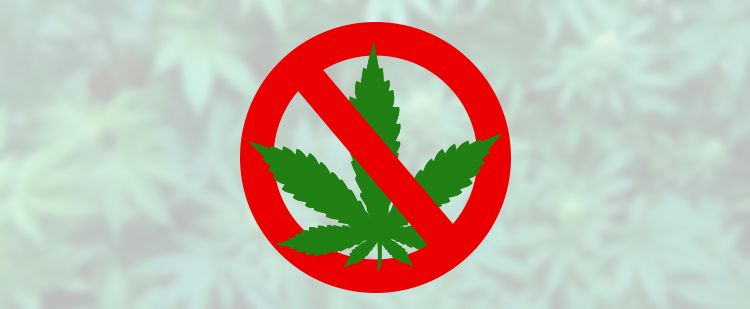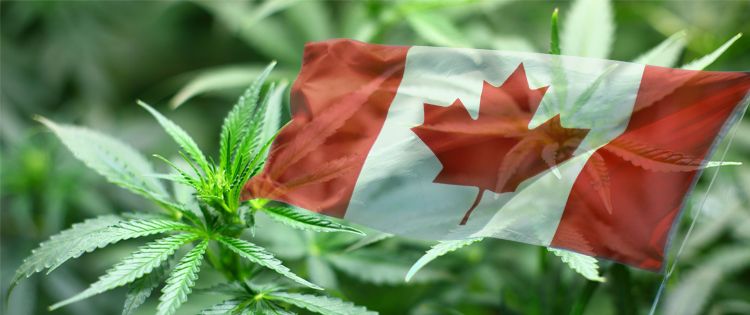The world is experiencing a huge shift in the battle of cannabis… we are not trying to STOP the use of cannabis anymore instead we are trying to legalize it worldwide. Playing a big role in the fight for the truth about cannabis, since the dawn of prohibition is Canada.
The stigma on cannabis in Canada is slowly being stripped off with the current support from the government, and its aim to make it accessible to those who truly need it.
Canada was the first country to legalize the use of cannabis. Cannabis in Canada legalization out in July of 2001 and since has chipped away the stigma that destroyed the reputation of this miraculous plant.
Cannabis in Canada has been labeled as “destructive” for far too long by different governments. This misinformation has engrained a false negative fear in people, that this plant can destroy our lives.
However, Canada has paved the way for cannabis legalization all over the world and to this day the Canadian advocates are still fighting for absolute freedom.
This article will talk about the history of cannabis in Canada, how prohibition came about and how Canada is now slowly helping rebuild the reputation of cannabis.
History of Cannabis in Canada
The history of the first-ever cannabis plant grown on Canadian soil is undetermined. We can only trace it back to early records by some of Canada’s first explorers.
Jacques Cartier, a French explorer that is now known to have discovered the great land of Canada said to have seen “hempe” written in one of his journals. Hempe, also known as Hemp, a long-stemmed fibrous plant that is a variety of cannabis.
Due to the lack of concrete information in Jacques Cartier’s journal, there is no proof that cannabis was indeed already available as a resource in the land.
1609

What we do know is that It was in 1609 that the first cannabis seeds were planted in Canada by the Europeans.
Harvesting the first-ever cannabis was Louis Hebert, a medical professional who used cannabis and other herbs for medicinal purposes. He was also the first person to farm in Canadian soil.
1700s

The planting of cannabis in Canada was the beginnings of a prosperous trade between Canada and France in the 17th century. This was when most of Europe’s industrial resources for war required hemp as a means for producing certain goods. Some examples of products that were made out of hemp at this time are:
- Ropes
- Naval Ships
- Sails
- Artillery
France promised Canadian farmers that they would only buy Canada’s hemp. This proved to be beneficial for both parties involved.
Other countries at this time were buying from different sources, like Spain traded with Chile, while England bought theirs in Great Britain.
1800s

Hemp was a commodity for most of Europe’s industrial resources during the mid 17th century. Sadly, this was replaced in the 1800’s when cotton gin allowed an easier harvest for cotton fibers replacing hemp. The invention of the steam engine also decreased the need for Hemp for naval purposes.
1900s

In the 1900’s, the prohibition of psychoactive cannabis was slowly progressing in Canada. The Narcotics Drug Act Amendment Bill added cannabis to its confidential restricted list in 1923. They referred to cannabis as being a “new drug” that provoked sexual acts of violence when used, a threat to white women.
The decision was influenced by Emily Murphy, a writer that wrote about claims of cannabis being addictive and that it could lead to insanity, death or abandonment.
It was not until the 1930’s that the prohibition of cannabis in Canada was really taken into account. This was when the Director of the Federal Division of Narcotic Control returned from his trip to the League of Nations.
Canada’s first cannabis arrest was done in 1937 for possession and use of the plant. From that date to the 1960’s, cannabis had already accounted for 2% of all drug-related arrests.
The Current Situation and Attitude towards Cannabis

Since the legalization of cannabis use for medical purposes in Canada in July 2001, cannabis has been researched more thoroughly by different institutions in the country.
Here is a rundown of recent important events on cannabis legislation in Canada:
#1 The compassionate act or end-of-life care, led to the legalization of medical cannabis in Canada. This was made possible by Health Canada, the institution who was also responsible for providing the certificate needed for cannabis use to patients via a physician.
The compassionate act provided the use of medical cannabis to four categories of patients that include those who suffered from epilepsy, seizures, and severe pain.
People were now able to observe how the lives of Canadians who used cannabis improved, and that this plant proved to do more good than harm. The compassionate act proved to have provided a positive impact on the Canadian people.
#2 The persecution of Marc Emery for selling cannabis seeds also brought light to the cannabis stigma despite the unfortunate mishappening. On 2005, Marc Emery a citizen of Canada was convicted by the United States for selling cannabis seeds across its borders.
The absurd ruling of government laws in place for selling seeds brought about frustration to the Canadian people. Marc Emery was dubbed the “prince of pot” and was released on July 2014.
#3 In 2015, Prime Minister Justin Trudeau gave updates on the process for the legalization of cannabis possession for medical and recreational purpose in Canada. It was to remove cannabis consumption and incidental possession from the Criminal Code. A flip to the coin, the Prime Minister also set up greater consequential laws for those who sold to minors.
Trudeau, whose push for the legalization of cannabis, focuses upon two guiding principles:
- To minimize underage access to marijuana
- To reduce criminal activity surrounding illegal marijuana trade
#4 Later in November of 2015, the ministers of Health and Public Safety announced that they were working on specifics to legalize cannabis in the country. It was in February this year, news broke that Canadian medical marijuana patients have won the right to grow cannabis in their own homes. This was released in a court ruling on February 24 2016.
#5 Federal Judge Michael Phelan has declared that the country’s medical marijuana regime, otherwise known as the Marijuana for Medical Purposes Regulations (MMPR), as unconstitutional. Which means that the federal law passed by Stephen Harper has no effect.
These recent events and responses to the issue of marijuana legalization prove that the stigma surrounding cannabis is now slowly crumbling down, not just in Canada but gradually, worldwide.
Now, let’s find out what Canada is famous for…
Famous Canadian Cannabis Strains

Canada offers a wide array of cannabis strains, some even winning multiple awards in cannabis cups. Canadian strains have been well-known to deliver good quality euphoric highs because they pack a hefty load of THC.
These strains are usually found to be grown indoors by privately owned grow operations across the country, making them top quality. These cannabis strains can be seen also in dispensaries because of the high THC levels it can provide for absolute therapeutic effects.
BC Bud
A very well known strain in the United States for its quality taste and euphoric high. It is an Indica dominant strain that hails for British Columbia. The origins of the original BC bud is uncertain but this strain is surely a top bud in Canada’s strain bucket.
BLUE DYNAMITE
A strain that was considered one of the Top 10 strains in 2007 by High Times magazine. The blue dynamite is an Indica dominant strain that delivers a smooth body high. Very popular amongst those patients who are looking for pain relief.
ISLAND SWEET SKUNK
This strain is pack with loads of CBD. A very therapeutic and medicinal strain, the Island Sweet Skunk is a Sativa dominant weed. Delivering more of a head high euphoric experience to the user. This strain was bred by the federation seed company in Canada.
ROMULAN
The name is derived from the humanoid species of alien origins popular in the star trek film. This out of this world Indica strain packs up huge amounts of THC that can definitely transport you to another galaxy.
M-39
An Indica dominant strain that is a descendant to the northern lights. The M-39 is a strain that is well known for giving out a next level high. The northern lights already packed a really awesome high, but the M-39 is in a total league of its own.
SWEET TOOTH
Sweet tooth is famous for winning the High Times Cannabis Cup in 2001. This is the same year the first legalization of medicinal marijuana took place in Canada. An Indica dominant strain, the sweet tooth provides an upper-body high that is a favorite amongst those seeking medicinal cannabis therapy.
What’s the Future for Cannabis in Canada?
The surge of support for the legalization of cannabis has never been stronger since the Canadian government opened the doors for medicinal marijuana access. The opportunity for patients now to grow medical cannabis in their homes will surely impact many lives as well as lead other countries to do the same.
Prime Minister Trudeau’s recent remarkable efforts in supporting cannabis within lawful grounds is one of the most commendable efforts made by a Government.
Now that medicinal cannabis has been put into legislation, it won’t be too far for this nation to start reaping the benefits economically.
What do you think is the future of the cannabis industry in Canada?
We would like to hear from you!
- How to Use Waxmaid Honey Pen? - April 9, 2024
- How To Choose The Best Electric Dab Rig For Christmas - December 7, 2023
- Maintenance Matters: Keeping Your Glass Water Bong in Pristine Condition - October 9, 2023


